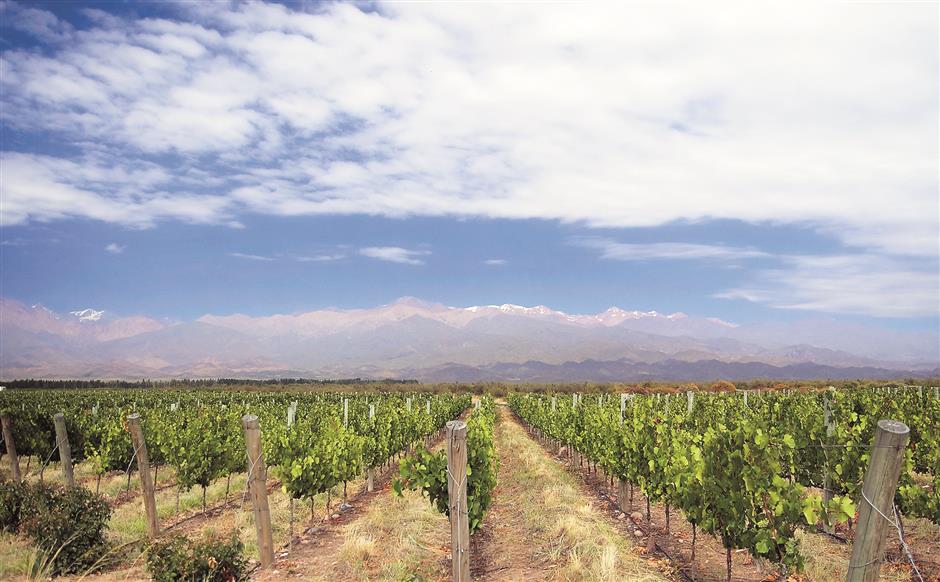Summary
Some of China’s most beloved dishes are all about the sauce. This is especially true with selected Beijing classics like zhajiang (fried sauce) noodles and roasted duck. The latter paired with a perfect vino partner is my focus this week. Beijing duck is one of the shinning glories of Chinese cuisine. Few dishes attract such universal acclaim and passion from both Chinese and Western gourmets. In my line of work, I often entertain internationally renowned wine and food experts. When selecting a dish for a diverse mix of people with discerning palates, I often choose Beijing duck. The combinations of quality ingredients, expert preparation and presentation result in a uniquely delicious flavor and texture experience that never fails to please the most discriminating and picky connoisseurs.
The first written accounts of this dish dates back to the Southern and Northern dynasties (AD 420-581) when it was mentioned as one of dishes at the imperial court. In the 14th and 15th centuries, the dish was commonly prepared in cavernous charcoal ovens and stuffed with sheep innards and scallions.
Over the ensuing centuries, the dish was made in a variety of different styles until the latter part of the Qing Dynasty (1644-1911) when the dish evolved into its modern form. Like many signature dishes from around the world, the recipe and ingredients were refined over a lengthy period of time until the dish reached perfection. But in this case, even perfection can be improved by pairing Beijing duck with an ideal wine companion.
For many, the Beijing duck go-to wine would be red. Balanced Merlots and Cabernet Sauvignons are indeed fine cohorts, but if you’re a lover of the accompanying sweet bean sauce and scallions then I have an even better partner. Think Pinot Noir with bubbles. When thinking of Pinot Noir sparkling wines, one region clearly stands out.

Champagne AOC
The world’s most famous sparkling wine comes in a variety of styles. What principally dictates the style of a Champagne is the location of the vineyards, the blend, fermentation, dosage and aging. Premier and Grand Cru vineyards make the most acclaimed and costly Champagnes but excellent Champagnes are also made with grapes from less celebrated vineyards.
The majority of Champagnes are blends of the three authorized grapes, namely Chardonnay, Pinot Noir and Pinot Meunier. There also exists single variety Chardonnay wines called Blanc de Blancs that tend to be lighter and have more finesse.
Pinot Noir Blanc de Noirs wines tend to be heartier and more structured and therefore superior wine solutions to Beijing duck. Some producers throw in a minority contribution Pinot Meunier in their Blanc de Noirs Champagnes to increase fruitiness. Both styles of Blanc de Noirs wines pair seamlessly with Beijing duck as the flavor of the sweet bean sauce is augmented by the sophisticated red fruit flavors of the sparkling wine, while the fine bubbles and acidity offset the greasiness of the skin making each succeeding bite more delicious.
Dosage also influences the style of a Champagne. Over 150 years ago most Champagnes were decidedly sweeter with only the English favoring drier wines. The influence of late 19th century British bubble lovers was profound, and gradually the majority of Champagnes became drier and the new term brut appeared. Today, several of my preferred Champagnes are even drier than brut. We call these Pas Dosage, Zero Dosage or Extra Brut wines. They are simply brilliant with Beijing duck.
When deciding on a Champagne one also must choose between a non-vintage or vintage wine. Non-vintage wines are actually a blend of dozens of wines from different vintages. The goal of the blending is to create a house style that is recognizable to the consumer year after year. Each year Champagne houses make 30 to 60 separate lots of wines from different villages located in the confines of the Champagne AC. A minimum of 20 percent of the wines must be kept in reserve for future years. These reserve wines play a crucial role in keeping the style of the non-vintage Champagnes consistent from year-to-year.
Vintage Champagnes are made from the grapes of one harvest and reflect the characteristics of that particular vintage. The house style may also be apparent in the wine but the style will inevitably vary according to the vintage. Vintage Champagnes are rarer and tend to be more expensive but not necessarily better. Still another factor that can increase a Champagne’s Beijing duck friendliness is fermentation in oak, a process that bequeaths greater body, richness and complexity.
Shanghai-based Beijing duck loving foodies are fortunate that we have no shortage of lovely Blanc de Noirs Champagnes in our fair city. Some of the best are made by Marie Courtin in the village of Polisot in the Cotes des Bars. This sub-region of Champagne features Kimmeridgian limestone soils and a slightly warmer climate than other parts of Champagne, perfect attributes for cultivating exceptional quality Pinot Noir. Perhaps my favorite Beijing duck vino partner is the 100 percent Pinot Noir barrel-fermented Marie Courtin Cuvee Efflorescence Extra Brut vintage Champagne. The house’s other Pinot Noir sparklers Cuvee Resonance Extra Brut and Cuvee Concordance Extra Brut are also fine roasted duck companions.
Other Blanc de Noir Champagne producers of note include Devaux, Bollinger, Pierre Paillard, Jacques Selosse and Pommery. Serve non-vintage Blanc de Noirs Champagnes 8 degrees Celsius and vintage wines 10 degrees Celsius.
Where to buy in Shanghai
Anteroom, 1222 Changle Rd, 5858-6689
Marie Courtin Cuvee Efflorescence Extra Brut
Marie Courtin Cuvee Resonance Extra Brut
Mare Courtin Cuvee Concordance Extra Brut
www.vinehoo.com
Devaux Blanc de Noirs Brut
Pierre Paillard Les Maillerettes Blanc de Noirs Brut
Jacques Selosse Contraste Blanc de Noirs Brut
Pommery Blanc de Noirs Brut





